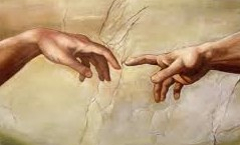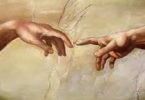Update: Want to see this tool in action? Read the demo I published here!
Smash writer’s block with my Character Creation Template! With the free template and the following instructions, you’ll be creating characters (and more engaging stories) in record time.
The Character Creation Template compresses a sophisticated random character generation system into a single piece of paper! The technology that makes this possible? Tarot cards — the most powerful “creative fuel” on the planet. Pair this template with your trusty Tarot deck, and watch your fiction come to life with the sort of characters readers love!
Instructions
1) Download the template. (Right-click it, and choose Save As…)
2) Get out your trusty deck of Tarot cards.
3) Draw eight cards at random — one for each blank on the template.
4) Card One – Appearance. Using elements you can see on the first card, brainstorm your new character’s physical attributes. Borrow skin tones, hair and eye color, and other features from characters on the card … or allow the card’s setting or theme to prompt ideas about how your character looks.
5) Card Two – Age. Allow numbers or people on the card to suggest your character’s apparent age. The Emperor, with his severe features and clipped beard, might prompt you to make your character an older man. On the other hand, the World card, the twenty-first trump, might prompt you to create a character who, at the stroke midnight on his twenty-first birthday, plans to buy his first legal drink.
6) Card Three – Visual Signature. Have fun with this card, which should suggest a single, visual “trademark” for your character. The banner on Trump XIX, the Sun, might prompt you to put a jaunty red feather in your character’s hat. The Chariot might make you give your hard-edged teen Wiccan a taste for NASCAR racing … and a racing jacket to match.
7) Card Four – Backstory. Tarot readers often integrate a “Past” or “History” card into their readings for clients. This card is the rough equivalent. Allow the images on this card to suggest ideas about your character’s former traumas, occupations, approach to spirituality, pet peeves, etc.
Go where the card takes you! You might, for example, see the Page of Pentacles’ coin, mistake it for a cookie, and spontaneously generate a disastrous story concerning your character’s ill-advised childhood efforts to sell boxes of Girl Scout confections for twice the going rate.
8) Card Five – Primary Strength. This card is the first of three designed to boost your sense of character … and your sense of story. By equating your character’s primary strength with whatever is required to to solve the story’s problem, you automatically equip your character to be the hero of the tale. For example: a character whose primary strength is a love of travel (suggested, perhaps, by the Three of Wands) could easily become the hero of a detective story featuring clues only a savvy traveler would notice and appreciate.
9) Card Six – Critical Flaw. This card represents whatever force you’ll use to impede your character’s progress toward resolution (and slow the pace of the story as needed). The Four of Cups might suggest that your character is easily bored, and therefore has trouble sticking with an important job or relationship. The Seven of Swords might hint that your character struggles with kleptomania (a very interesting problem, say, for a hard-edged detective to have).
Oooh! What if the detective, like some serial killers, has a secret penchant for taking a single trophy from each crime scene? And this time, thinking he’s stealing an incidental personal item, he steals the critical clue … prompting the murderer to come after him? (Do you see now how a single card can suggest an entire storyline?)
10) Card Seven – Motivator. What does the character lack, but long for? What does he or she crave, on a psychological or emotional level? A mother’s approval (suggested, perhaps, by the Empress)? Salvation (as illustrated by the Judgment card)? Fame (as evidence by the Seven of Wands)?
11) Card Eight – Problem Solving. How does your character respond when thrown into conflict? Does she retreat into a fantasy world (Seven of Cups)? Does he rush forward, fists flying (Five of Wands)? Is she aroused (Lovers)? Is he only really happy when everything’s falling apart (Nine of Cups)?
Let this powerful tool prompt you to write about places and people you’d never explore on your own … and, as always, let me hear about your questions and experiences!
Update: Want to see this tool in action? Read the demo I published here!




Just bought book “What’s in the Cards for You”
I am trying to download a free copy ot Answer Minning template.
Hey, Gary. Thanks for picking up What’s in the Cards for you. I love that book!
The Answer Mining Template is in the Tools section of my site, and I agree it’s a bit hard to find as currently organized. I’ll fix that. Meantime, here’s the link to the document:
http://www.tarottools.com/wp-content/uploads/2013/11/Answer-Mining-2014.pdf
Have fun!
Hi Mark,
I tried the link to contact you in the website and couldn’t figure it out. I have some questions regarding writing a tarot book and I saw some of your comments on aeclectic tarot and you some like a knowledgable resource! My partner is painting a deck, based on traditional tarot (Visconti/Marseilles/RW) with new imagery. MY question is, as the writer of the booklet, with so many books, meanings, and reversals written over the years, what is my leeway in writing this without getting accused of plagiarism. I’ve done tons of research with many decks, books, articles, etc., but if I use the word “thief” to describe the seven of swords (as many have done), is there a problem with that? (as one example). What I’m doing is reading and reading a lot. Then, I sit down and craft my own note, meaning, and reversal based on that research. I will then cite these articles, books, and decks in our work. However, occasionally, I will come up with something, check it against another deck and they will have the same word: happiness, insensitivity, gain at someone’s expense, and so on. Will this get me in trouble or because tarot is a community with a “technical language” that is understood, does that give me more leeway. Strength card is going to have words that have undoubtedly been used by other people before. I think you see my question. Any thoughts? I really appreciate you help…